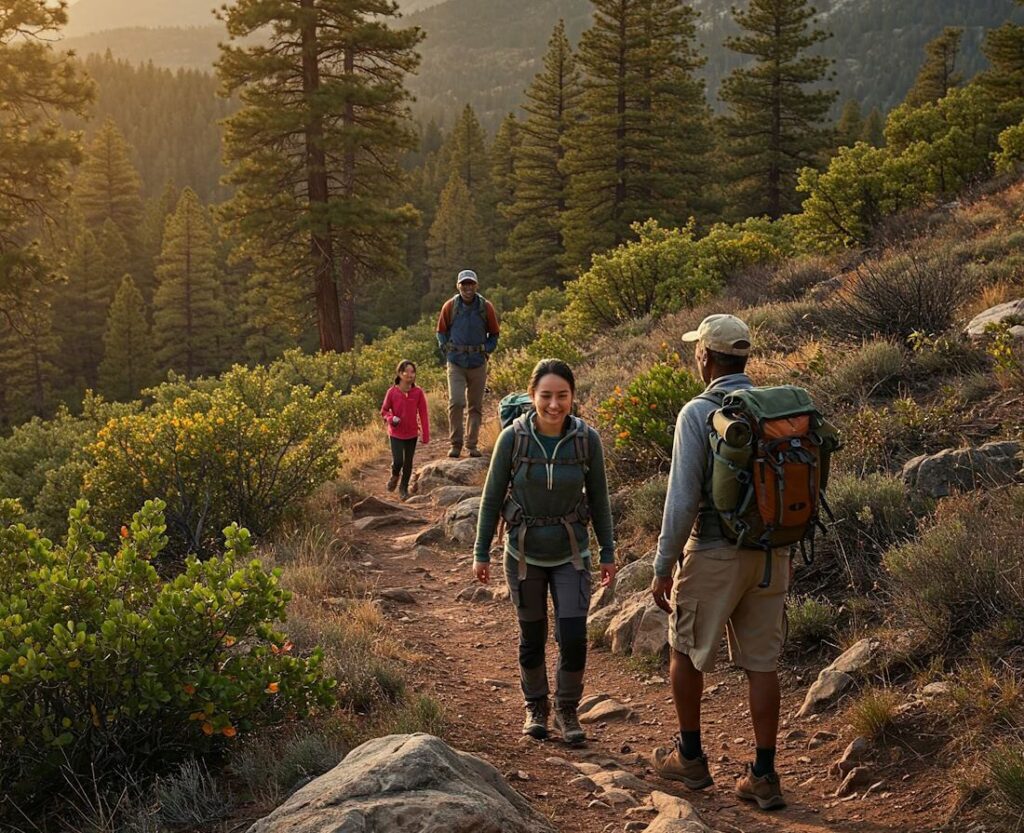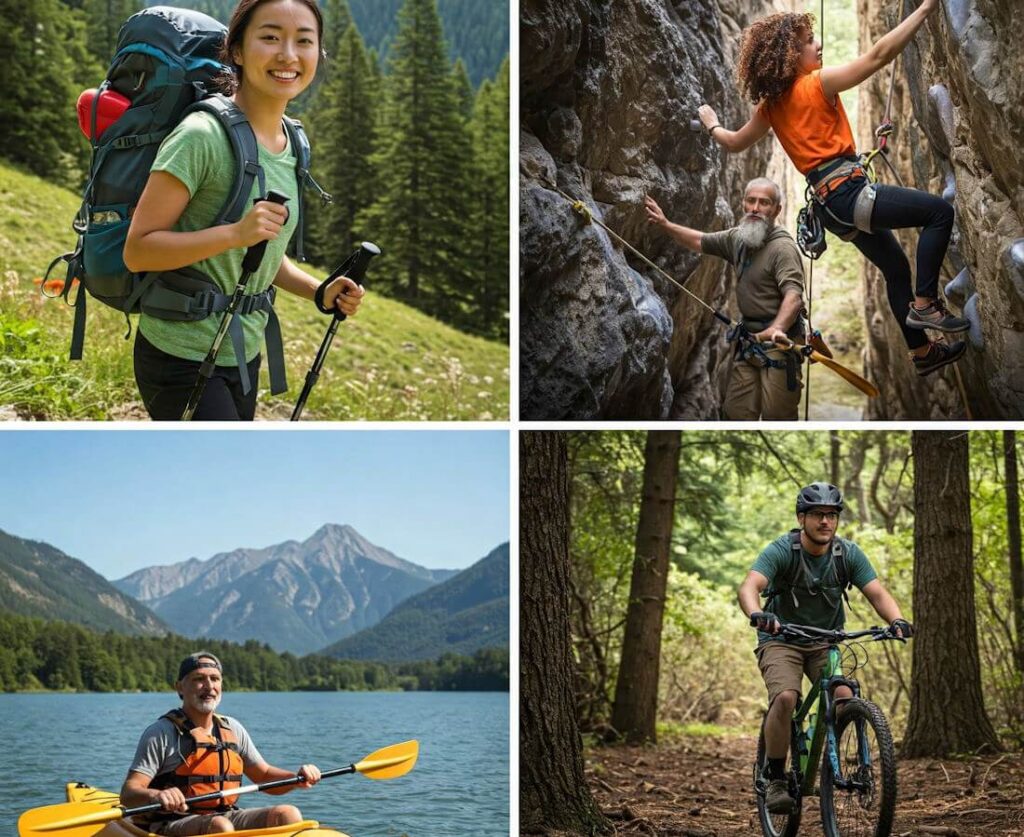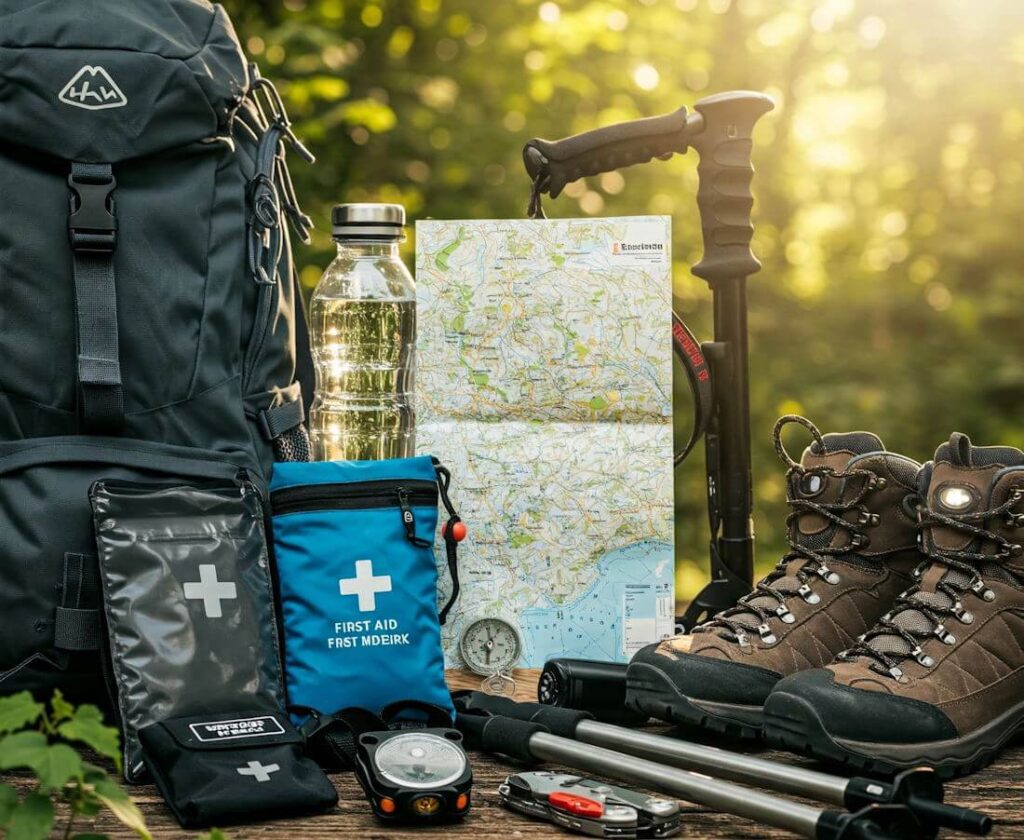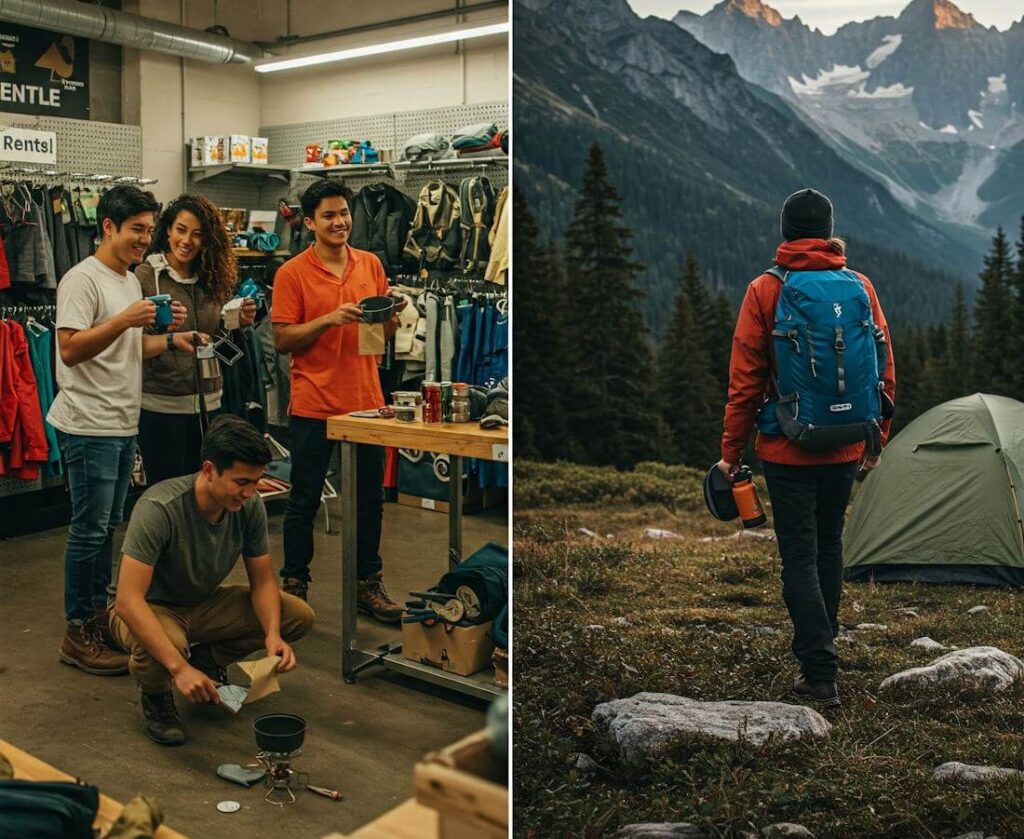National parks offer a unique opportunity for individuals to experience the great outdoors in all its glory. These protected areas are not just preserves of natural beauty but also vital ecosystems that house a diverse array of flora and fauna. With their breathtaking landscapes ranging from towering mountains to serene lakes, national parks present a perfect backdrop for a multitude of recreational activities, making them an appealing destination for adventurers and nature enthusiasts alike.
The allure of national parks lies in their ability to connect visitors with the beauty and wonder of nature. Each park has its distinct character, showcasing unique geological formations, ecosystems, and wildlife. This diversity enables a wide range of experiences, including hiking through scenic trails, kayaking in tranquil waters, or camping under a canopy of stars. Such activities not only foster a sense of adventure but also serve as a means to develop a deeper appreciation for our natural world.
In planning a visit to a national park, it is essential to consider the required gear that can significantly enhance the exploration experience. Whether one seeks to conquer challenging terrains or simply relax amidst nature, the right equipment can make all the difference. Campers may require tents and sleeping bags, while hikers might opt for sturdy footwear and hydration packs. Understanding what gear is available for rent can alleviate the burden of travel logistics and ensure that visitors have the tools they need to maximize their adventure.
As we delve deeper into the gear necessary for enjoying the wonders of national parks, it is crucial to keep in mind the variety of experiences and activities these natural havens have to offer. By selecting the right equipment, visitors can ensure a memorable and fulfilling exploration of the Great Outdoors.
Determining Your Adventure Type
National parks offer a diverse range of activities that cater to various interests and skill levels. Understanding the type of adventure you seek is crucial in determining the appropriate gear to rent for your journey. Whether you are an aspiring hiker, an enthusiastic camper, a rock climbing expert, or a wildlife observer, each activity requires specific preparations and equipment.
For those interested in hiking, consider the park terrain and trail difficulty. Hiking can range from easy nature walks on flat paths to challenging backcountry treks that require advanced navigation skills. In turn, the type of hiking gear you need will depend on the duration and intensity of your hike. Lightweight boots and weather-appropriate clothing are essential for short day hikes, while multi-day trekking demands more specialized equipment such as trekking poles and a hydration system.
Camping enthusiasts will find that national parks often provide designated camping areas, each with unique regulations and amenities. Depending on the park’s environment and whether you choose tent camping or an RV setup, the camping gear varies significantly. Essentials such as sleeping bags, cooking equipment, and portable shelters should be tailored to the climate and conditions of your selected national park.
Rock climbing, on the other hand, calls for a different set of gear, from harnesses to climbing shoes, and sometimes even ropes and carabiners. It is vital to assess whether the park has established climbing routes and the regulations regarding climbing equipment before renting. Knowledge of the area’s climbing demands allows you to align your rental choices with your climbing capacity.
Lastly, wildlife watching can be a serene and rewarding experience. Binoculars and field guides become essential tools for tracking and identifying the local fauna. The gear rental for wildlife observation can also include camera equipment, enhancing your ability to capture the stunning beauty of nature without intruding on the animals’ habitats.
Essential Clothing for Comfort and Safety
When venturing into national parks, the right clothing is essential for ensuring both comfort and safety during outdoor activities. Layering techniques play a crucial role in adapting to changing weather conditions, which can be unpredictable in many natural environments. The foundation of a suitable outfit typically consists of moisture-wicking base layers, which help to draw sweat away from the skin, keeping you dry and comfortable as the day progresses.
Additionally, mid-layers provide necessary insulation, especially in colder climates. Fleece jackets or insulated vests are commonly recommended, as they are lightweight yet effective in retaining body heat. The outer layer is equally important; a weatherproof and breathable jacket will shield you against rain and wind. It is advisable to choose materials that offer both durability and flexibility, ensuring ease of movement during hiking or other physical activities.
Footwear choice can significantly impact your overall experience while exploring national parks. Proper hiking boots or trail shoes are essential for navigating uneven terrain. It is beneficial to select footwear with good ankle support and tread, as this can help prevent slips and injuries. Many outdoor retailers offer rental options for high-quality hiking shoes, allowing visitors to equip themselves without needing to purchase new items.
In warmer climates, wearing lightweight and breathable clothing is vital to avoid overheating. Fabrics that provide UV protection are also important when spending extended periods outdoors, as skin protection from sun exposure can prevent long-term damage. Overall, investing time to select appropriate clothing can enhance both safety and enjoyment while exploring breathtaking landscapes. Utilizing local rental services can ease the burden of carrying excessive gear while still ensuring a comfortable and safe adventure.
Camping Gear: What You Need to Bring
When embarking on a camping adventure in one of the national parks, having the right gear is crucial for ensuring a comfortable and enjoyable experience. From tents to cooking equipment, the selection of camping gear you choose can greatly influence the overall enjoyment of your trip. First and foremost, securing a reliable tent is essential. Tents come in various sizes and designs, so it is important to select one that fits your group size and the weather conditions you might encounter. Look for options that are easy to set up and provide adequate protection from the elements.
The next vital item on your camping gear list is a sleeping bag. A quality sleeping bag can keep you warm on chilly nights and allow for a restful sleep, which is integral to your camping experience. Consider the temperature rating and insulation type of the sleeping bag to ensure it meets the expected conditions of the park during your visit.
Cooking while camping can be a rewarding experience, but it requires appropriate gear. A portable camping stove is a practical choice for preparing meals in the wild. Additionally, cookware such as pots, pans, and utensils is essential for meal preparation. Don’t forget to pack food storage solutions and a cooler if your trip includes perishable items.
Renting camping gear is often a more economical option compared to purchasing. If you are a novice camper or only plan to go once or twice a year, rental services can supply you with well-maintained, high-quality equipment tailored to your specific needs. Evaluate the duration of your stay and the unique requirements of the environment to determine the best gear to rent. This approach not only saves on costs but allows for flexibility, enabling you to try different types of equipment with each adventure. Thus, making informed decisions about the right camping gear can significantly enhance your overall experience in a national park.
Navigation Tools for Outdoor Exploration
When venturing into national parks, having reliable navigation tools is crucial for ensuring a safe and enjoyable experience. These tools not only help hikers and campers find their way but also enhance their appreciation of the natural surroundings. The essential navigation tools include maps, compasses, GPS devices, and mobile apps, each serving a unique purpose in outdoor exploration.
Maps are the traditional yet indispensable navigation tool. They provide an overall view of the terrain, trails, and landmarks within national parks. Understanding how to read topographical maps can help in identifying elevation changes, water sources, and potential challenges. Carrying a physical map is advisable, as it does not rely on battery life, making it a reliable backup when other devices fail.
Compasses are another critical tool for outdoor navigation. They work in tandem with maps, enabling users to determine their direction efficiently. Familiarizing oneself with compass usage—such as taking bearings and understanding declination—can significantly enhance expedition safety. Even with the advent of digital technology, a compass remains a fundamental skill for any outdoor enthusiast.
GPS devices are highly accurate and can provide real-time location data, significantly reducing the chances of getting lost. These devices come pre-loaded with trail maps and can offer turn-by-turn directions in some cases. However, they often require batteries or charging, hence it is essential to carry extra power sources or a charger while hiking.
Mobile apps add another layer of convenience to outdoor navigation. Many apps offer downloadable maps, trail information, and even social networking features for connecting with fellow hikers. Nonetheless, reliance on a smartphone can be risky if the battery drains or signal is lost in remote areas. Therefore, combining multiple navigation tools is recommended for optimal safety and usability during national park explorations. Overall, enhancing one’s navigation skills with these tools is key to a successful outdoor experience.
Safety Gear: Preparing for the Unexpected
When venturing into the great outdoors, safety must always be a primary concern. Whether you are planning to hike rugged terrains, navigate through dense forests, or engage in wildlife observation, having the appropriate safety gear on hand is essential. Key safety equipment can significantly influence your overall experience and ability to handle unexpected challenges.
One crucial piece of safety gear is a fully stocked first aid kit. This kit should not only include basic supplies such as band-aids and antiseptic wipes but also more specialized items like adhesive tape, gauze pads, and scissors. It is advisable to customize your first aid kit based on the specific activities you plan to undertake in the park and the potential risks associated with them. Familiarizing yourself with the contents and knowing how to use each item can be invaluable in an emergency.
Bear spray is another vital piece of equipment, especially in parks where bear encounters are a possibility. This powerful deterrent can provide an essential line of defense against aggressive wildlife. Ensure that you familiarize yourself with how to carry and use bear spray before embarking on your trip. Additionally, understanding the wildlife present in the area can help in preparing for encounters and in making informed decisions regarding your safety.
Headlamps are also an often-overlooked yet critical safety gear. They provide reliable illumination for nighttime navigation or during unexpected emergencies that may occur after sunset. Opt for a lightweight and durable model that can serve multiple functions, such as signaling for help. When choosing your safety gear, consider specific park conditions, including weather and terrain, to ensure that you are adequately prepared to face unforeseen circumstances.
Photography Equipment for Capturing Memories
Exploring national parks presents unique opportunities for photography enthusiasts to capture breathtaking landscapes, vibrant wildlife, and memorable moments in nature. When preparing for this experience, renting the appropriate photography equipment can significantly enhance your results. Here, we outline essential gear to consider, ensuring you are well-equipped to capture stunning images.
A high-quality camera is at the heart of good photography. Consider renting a digital single-lens reflex (DSLR) or a mirrorless camera. These types of cameras offer superior image quality, flexibility, and a range of features suited for various photography styles. Ensure to check for camera models that are lightweight and user-friendly, especially if you plan to hike to different locations within the park.
Lenses play a crucial role in your photography endeavors. A versatile zoom lens, such as a 24-70mm, can serve well for both landscapes and portraits, while a telephoto lens is ideal for capturing wildlife from a safe distance. Renting a lens with image stabilization can also help maintain sharpness in your photos, particularly when shooting handheld or in low-light conditions.
To ensure stability and optimal composition, do not overlook the importance of a quality tripod. A sturdy tripod allows for long exposure shots, such as capturing the beautiful twilight sky or moving water. Ensure the tripod is lightweight for ease of transport yet stable enough for varying terrains.
Protection for your equipment is also paramount. Consider renting protective cases or camera backpacks designed for outdoor use to safeguard your gear against elements such as dust, moisture, or accidental drops. This case will not only protect your equipment but will also allow for quick accessibility during spontaneous shots.
Finally, regardless of the gear you choose, remember to adapt your equipment selection based on the specific photography themes you wish to pursue, whether it’s capturing expansive landscapes or intimate wildlife moments. Your preparation can make the difference between a good photo and a breathtaking memory.
Food and Hydration: What to Pack or Rent
When exploring national parks, maintaining proper hydration and nutrition is crucial for an enjoyable experience. A well-thought-out approach to food and hydration gear can significantly enhance outdoor adventures. One of the primary items to consider is a portable cooler. These coolers, especially those designed for rugged outdoor conditions, can keep food and beverages cold throughout the day. Renting a cooler may be an excellent option for travelers who want to minimize their gear load or don’t frequently engage in outdoor activities.
In addition to a cooler, having access to clean drinking water is essential. To ensure you stay properly hydrated, consider utilizing a reliable water filtration system. Water filters are lightweight and easy to use; they eliminate the need to carry heavy water bottles. Many national parks have natural water sources, and a portable water filter can provide safe drinking water while reducing waste associated with single-use plastic bottles. Renting a water filtration system is also a viable option for those who may not want to invest in this equipment for occasional trips.
Moreover, effective meal preparation is another fundamental aspect of outdoor excursions. Packing high-quality food containers helps in organizing meals and preventing spoilage, while also making clean-up easy. Nutrient-rich foods, such as nuts, dried fruits, whole grains, and protein sources, should be prioritized, as they provide sustained energy during hikes. Renting cooking equipment like portable stoves or utensils can be very beneficial. It allows for flexible meal options and creates opportunities for enjoyable group cooking experiences in the great outdoors, further enriching the park experience.
Planning your food and hydration gear thoughtfully facilitates a comfortable and fulfilling exploration of national parks. Through appropriate rentals and preparation, adventurers can relish the beauty of nature while staying nourished and hydrated throughout their journey.
Conclusion: Maximizing Your National Park Experience
In order to have an enjoyable and safe visit to our national parks, it is essential to carefully consider your gear selection. Appropriate equipment not only enhances comfort but also serves as a crucial factor in ensuring personal safety while navigating the diverse landscapes these glorious parks have to offer. When choosing gear, potential visitors should assess their specific needs based on the type of adventure they plan to undertake—whether that be hiking, camping, or engaging in water activities.
Taking the time to plan ahead cannot be overstated. Visitors should evaluate the specific environmental conditions they may encounter, as climate and terrain play significant roles in gear requirements. Additionally, opting for rental gear can be a sensible solution for those who do not wish to invest in high-quality equipment for a one-time use. Rental services often provide a comprehensive range of well-maintained gear that meets safety standards and caters to various outdoor activities.
The overarching goal is to equip oneself adequately in order to enjoy the natural beauty and recreational opportunities that national parks present. By emphasizing appropriate gear selection, visitors can enhance not only their safety but also their overall enjoyment during their explorations. As a final thought, we encourage readers to share their own experiences regarding their gear choices or to offer recommendations for items that have positively impacted their time spent in national parks. Engaging in community discussions can help fellow adventurers make informed decisions, resulting in memorable experiences amidst nature’s splendor.




